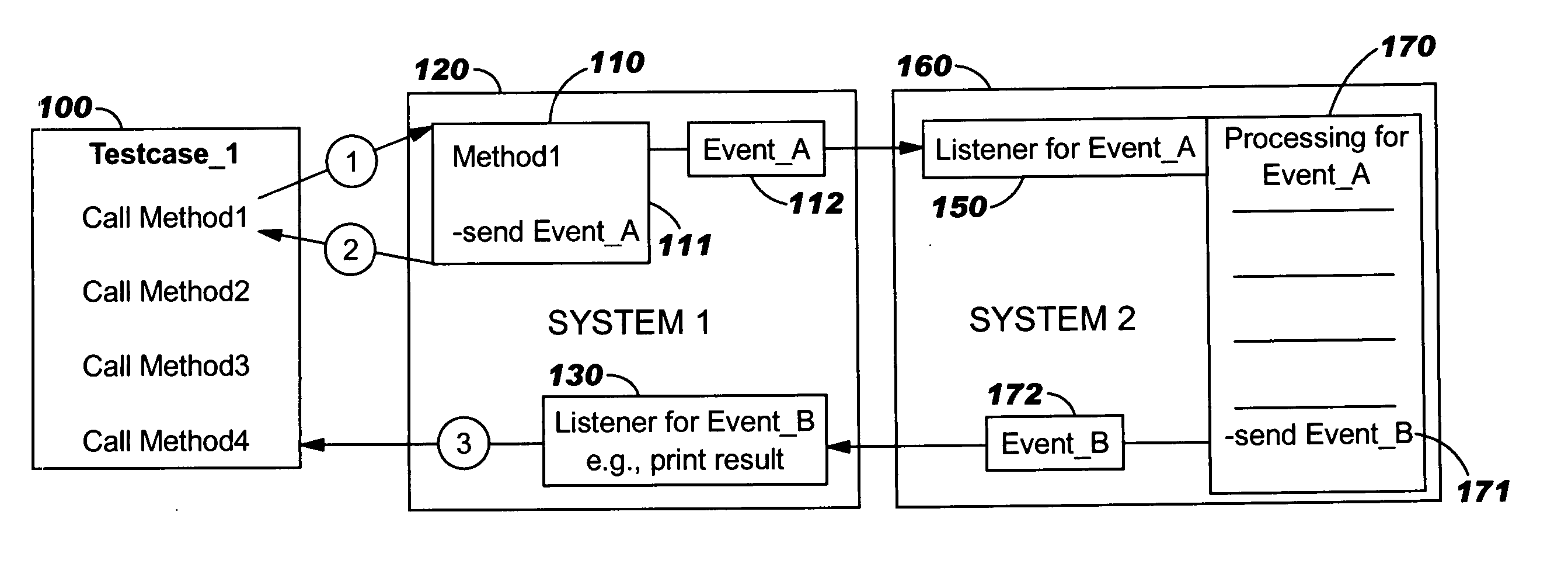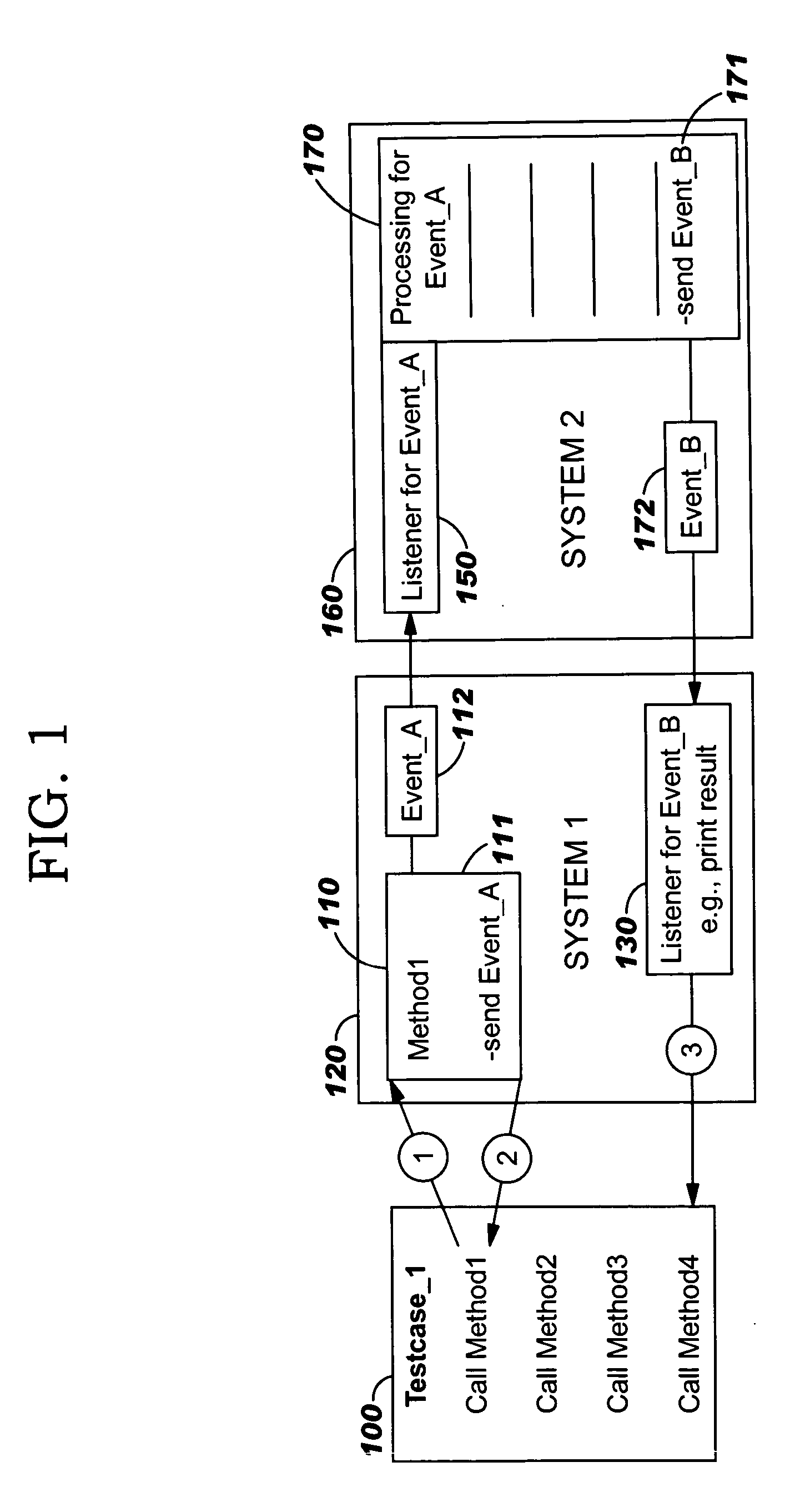Automated testing framework for event-driven systems
a technology of event-driven systems and testing frameworks, applied in the field of computer programming, can solve the problems of insufficient system use for event-driven, listener-based systems, and high level of human involvement in the testing process
- Summary
- Abstract
- Description
- Claims
- Application Information
AI Technical Summary
Benefits of technology
Problems solved by technology
Method used
Image
Examples
Embodiment Construction
[0021] The present invention provides techniques for automated testing in event-driven systems. In an event-driven system, events are a primary means of communication among processes. Each type of event has a deterministic and logical response that the system will produce. For example, whenever Event_A from the sample test case in FIG. 1 happens, it is known that the system needs to process that event for an unknown period of time. And, whenever Event_B from the sample test case happens, it is known that the system has completed the processing of Event_A. This information can be used to determine when the system is still busy with the processing of code pertaining to Method1, and when it is not, according to preferred embodiments.
[0022] Preferred embodiments leverage this information, using events that communicate the start and end of activity. Thus, automated test execution according to the present invention uses listeners in event-driven systems to listen to events, and responsiv...
PUM
 Login to View More
Login to View More Abstract
Description
Claims
Application Information
 Login to View More
Login to View More - R&D
- Intellectual Property
- Life Sciences
- Materials
- Tech Scout
- Unparalleled Data Quality
- Higher Quality Content
- 60% Fewer Hallucinations
Browse by: Latest US Patents, China's latest patents, Technical Efficacy Thesaurus, Application Domain, Technology Topic, Popular Technical Reports.
© 2025 PatSnap. All rights reserved.Legal|Privacy policy|Modern Slavery Act Transparency Statement|Sitemap|About US| Contact US: help@patsnap.com



